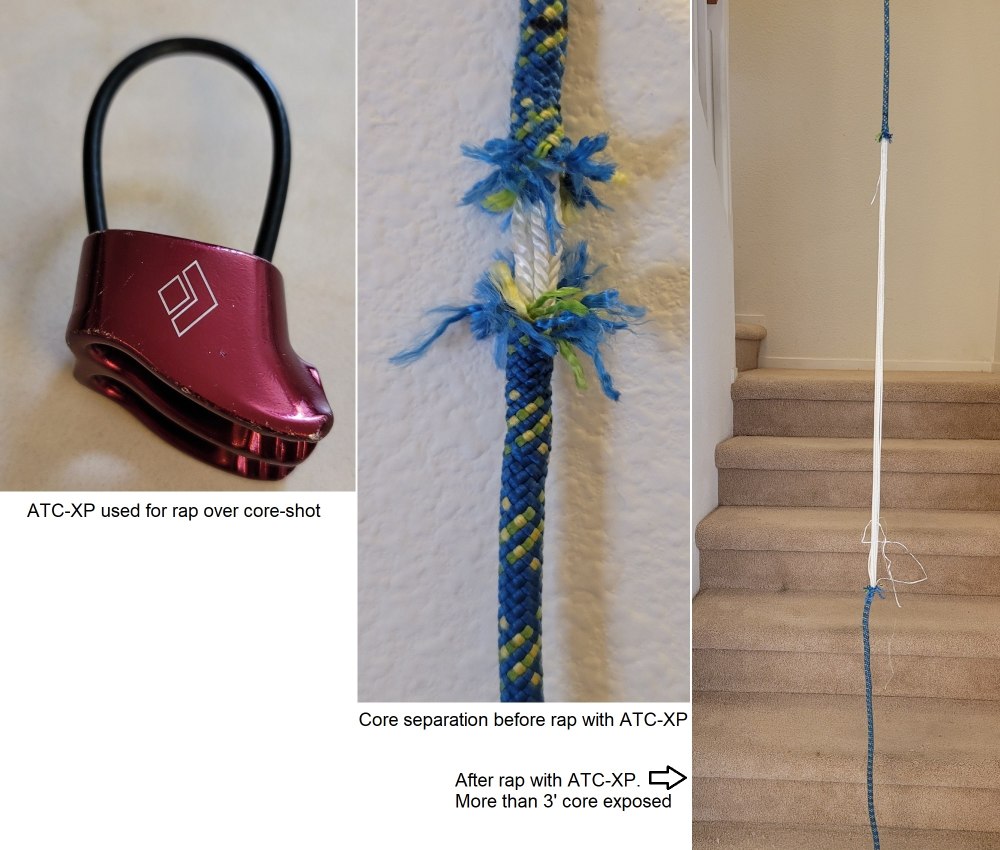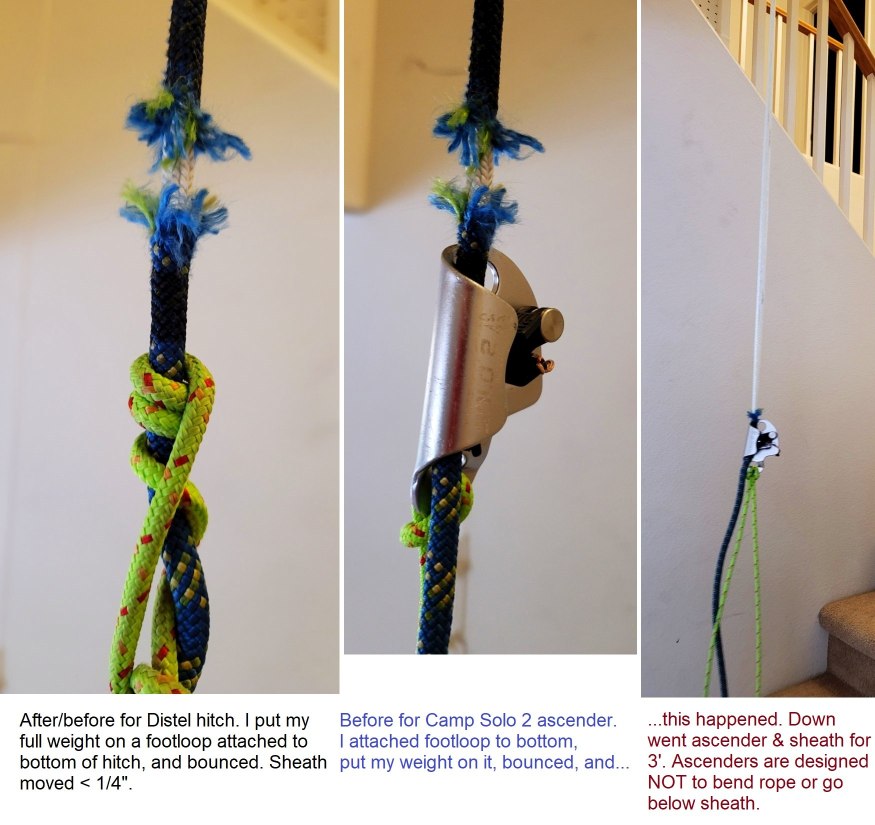
Coreshots: ATC and mechanical ascender versus Munters and
Distel hitch.
At least once, I’ve had the prospect of rapping or ascending
on ropes that are known or suspected to have core-shots. Some rap devices –
such as ATCs or Piranhas, are known to be very hard on ropes, in terms of
causing core-sheath separations. I’ve previously discussed using a Munter to rap over a
double-strand 6mm (Dyneema-core) rope with a core-shot.
This time I want to look at a core-shot 8mm rope, and
compare ATC and Munter for a single-strand rap. Then I’ll discuss
ascending a core-shot rope with a mechanical ascender, versus a friction knot.
I’ll be doing the tests in my stairwell, which has a super-reinforced anchor in
the ceiling; I will have 6-8’ before the device goes over a complete
core-sheath separation, and another 6’ of rope to just above the carpeted and
padded stairs, so my fall can’t be too bad. The idea is to make the test
somewhat realistic, but not really dangerous.
Rap test: I broke the sheath strands all around the
circumference, but left the core strands intact (middle image in figure below).
My first rap used an ATC-XP in high-friction mode; when it hit the break in the
sheath, I immediately dropped ~3’, exposing the core for that length, hitting
the stairs with my feet and butt.

The second rap used a new, similarly situated rope, but used
a single Munter, with the brake hand in the up position. This rap was slightly
slower, till the break, when it sped slightly and then stopped completely and
left me hanging in the air (middle image in figure below). The Munter appeared
as in the right image.

For the ascender test, I started with a new rope with a
circumferential break between sheath and core. The first (left) image in the figure
below is the “after” shot for the Distel hitch trial; I attached the hitch just
below the break, pulled it tight, then put my full weight on it, bouncing
several times. The hitch moved less than ¼”. The middle image in the figure
below shows a Camp Solo2 ascender, attached on the same rope. I put my full
weight on the ascender, bounced, and immediately stripped at least 3’ of sheath
(right image), essentially stopped by my legs and butt hitting the carpeted stairs.

My take: if you suspect a coreshot in the rope
below (en
rapelle) or above (on ascent), you may be a lot better off using “old”
rope-only methods. In an ascent, a mechanical ascender is designed so
the teeth
do not enter the core, but stay almost entirely in the sheath. In
constrast, a
tightened Distel or Schwabisch hitch will compress the sheath against
the core,
and will bend the rope slightly, making core-sheath separation much
more
difficult. It would be wise also to use a double-rope rap on a rope
known to
have compromised sheath. For the rap, you will still have to escape the
coreshot area, as you would in any situation where the descender is
stuck.